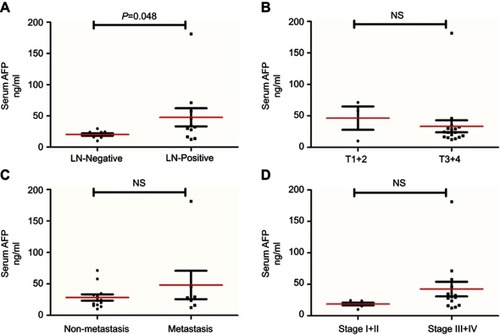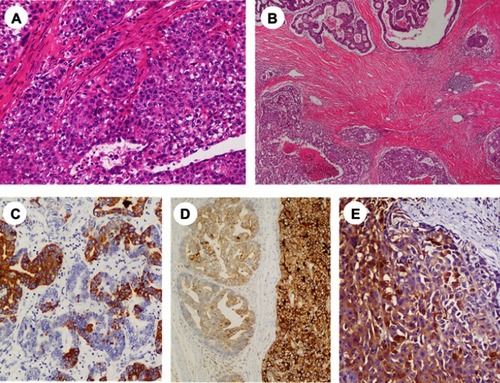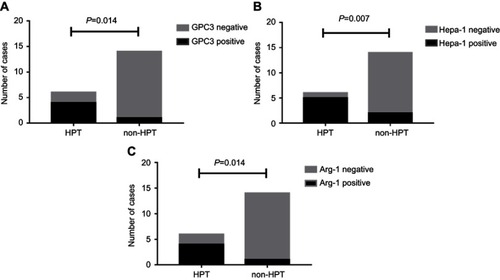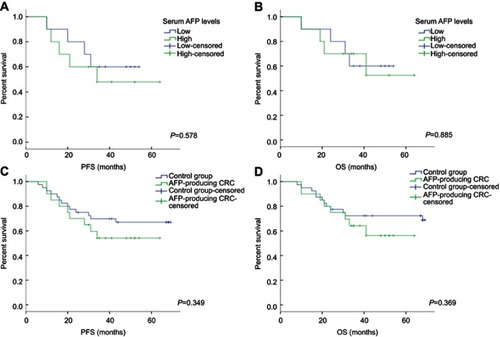Figures & data
Table 1 Clinicopathological characteristics of 20 patients with AFP-producing CRC
Figure 1 Statistical analysis of the serum AFP between different clinicopathological parameters. (A) The serum AFP levels in patients with LN metastasis were significantly higher than those in patients without LN metastasis. There were no significant differences between the AFP level and local invasion (T stage) (B), distance metastasis (C), or TNM stage (D).
Abbreviations: LN, lymph node; NS, not significant.

Table 2 Changes of serum level of AFP and CEA at the time of preoperation and postoperation
Figure 2 (A) Poorly differentiated CRC composed of hepatoid type (HE, original magnification×200). (B) Types of histological transitions in AFP-producing CRC, transition from COM (right side) to HPT (left side) (HE, original magnification×40). (C–E) Immunohistochemical staining: (C) Hepa-1; (D) GPC-3; (E) Arg-1. (immunohistochemistry, original magnification×200).
Abbreviations: COM, common adenocarcinoma type; CRC, colorectal cancer; HPT, hepatoid type.

Table 3 Immunohistochemical and molecular findings in AFP-producing CRC
Figure 3 Comparisons of immunohistochemical staining in different histological patterns. The positive staining rate of GPC3 (A), Hepa-1 (B) and Arg-1 (C) was significantly higher in the HPT than in the non-HPT.
Abbreviation: HPT, hepatoid type.

Figure 4 Kaplan–Meier estimates of PFS (A) and OS (B) among patients with low serum AFP levels and high serum AFP levels. Kaplan–Meier estimates of PFS (C) and OS (D) among patients in the AFP-producing CRC and control groups. (P<0.05).
Abbreviations: CRC, colorectal cancer; OS, overall survival; PFS, progression-free survival.

Table S1 Clinicopathological characteristics of 40 stage-matched patients with traditional CRC (non-AFP-producing CRC)
